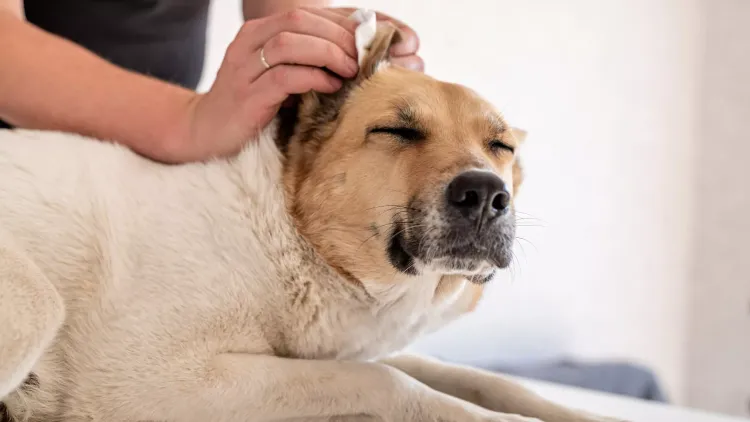Mushroom Detectives: Harnessing Your Dog’s Nose for Fungi Foraging

Mushrooms have fascinated humans for centuries, whether for culinary, medicinal, or spiritual reasons. But did you know our canine companions can also be trained to find these elusive fungi? Let's delve into the types of mushrooms dogs can be trained to sniff out and how to safely introduce this new hobby to your furry friend.
How Good are Dogs in Finding Mushrooms?
Dogs can be very efficient at finding mushrooms, especially when trained properly. Their acute sense of smell allows them to detect specific fungal scents, even when the mushrooms are hidden beneath leaves or soil. However, the efficiency and accuracy of a dog in finding mushrooms largely depend on the training they've received and their experience. Here are some factors to consider:
- Specificity: Dogs can be trained to find specific types of mushrooms, such as truffles, morels, or chanterelles. This can be particularly valuable for foragers looking for certain edible varieties while avoiding toxic ones.
- Safety: One primary concern is ensuring that dogs don't consume mushrooms during their search. Some mushrooms are toxic and can be harmful or even lethal if ingested. Proper training ensures that dogs indicate the presence of a mushroom without eating it.
- Training Complexity: Training a dog to find mushrooms can be more complex than other scent-detection tasks. The variety of mushroom scents, combined with the multitude of other woodland scents, can be challenging. However, with consistent training, many dogs can become quite adept at the task.
- Environmental Impact: Just as with truffle hunting, dogs can be less disruptive to the environment than humans or other animals when searching for mushrooms. They can quickly locate mushrooms with minimal disturbance to the surrounding area.
- Bonding Experience: Mushroom hunting can be a rewarding bonding experience between a handler and their dog. It provides mental stimulation for the dog and can be a fun and productive outdoor activity for both.
While dogs can be efficient at finding mushrooms, their success largely depends on the quality and consistency of their training. With the right training, they can be invaluable assistants in the search for specific mushroom varieties.
What Kind of Mushrooms Can Dogs Be Trained to Find?
Dogs can be trained to find a variety of mushrooms due to their keen sense of smell. Some of the most commonly sought-after mushrooms by dogs are:
1. Truffles
Arguably the most famous fungi sought after by dogs (and pigs!), truffles are a delicacy that can fetch a pretty penny. They grow underground in association with the roots of certain trees. With their unique and strong aroma, dogs can be trained to find them with a little patience and the right training techniques.
2. Morels
Morels are another gourmet mushroom that many foragers seek. These distinctive fungi, with their honeycomb appearance, are a springtime favorite. Training a dog to find morels can not only make the hunt more successful but also a fun bonding activity.
3. Chanterelles
Golden in color and trumpet-shaped, chanterelles are another wild edible that mushroom enthusiasts love. With their fruity aroma, dogs can be trained to detect them, making your foraging expedition all the more fruitful.
4. Porcini (King Bolete)
Porcinis, with their earthy aroma and meaty texture, are a favorite in many Italian dishes. They're somewhat more challenging to train a dog to find compared to truffles, but with persistence, it's entirely feasible.
While these are some of the more common types that dogs are trained to find, theoretically, a dog can be trained to locate any mushroom with a distinct scent. However, it's crucial to emphasize safety. Many mushrooms can be toxic, and while the goal is to train the dog to locate and not consume them, it's vital to supervise them closely and be aware of potentially harmful mushrooms in the area.
Safety First: Mushrooms to Avoid
While there are many edible mushrooms, there are also toxic varieties that can be harmful or even lethal if consumed. If you're training your dog to forage for mushrooms, it's imperative to ensure they don't ingest any mushrooms they find. Always supervise your canine companion and know how to identify toxic varieties in your region.
Training Tips:
- Start with Scent Familiarization: Begin by letting your dog sniff the mushroom you want them to find. Use fresh specimens or scent extracts for this purpose.
- Positive Reinforcement: Reward your dog with treats and praise every time they show interest in the desired mushroom scent.
- Practice in Controlled Environments: Before hitting the forest, practice in your backyard or a controlled area where you hide the mushrooms, gradually increasing the difficulty.
- Safety Measures: Always have your dog on a leash during initial training sessions in the wild to avoid them running off or consuming unknown mushrooms.
Wrapping Up
Training your dog to find mushrooms can be a rewarding experience for both of you. It provides mental stimulation for your pup, helps you bond, and can even make your mushroom foraging more productive. Remember, safety first: always supervise your dog during foraging expeditions and familiarize yourself with the toxic mushrooms in your area. Happy foraging!



